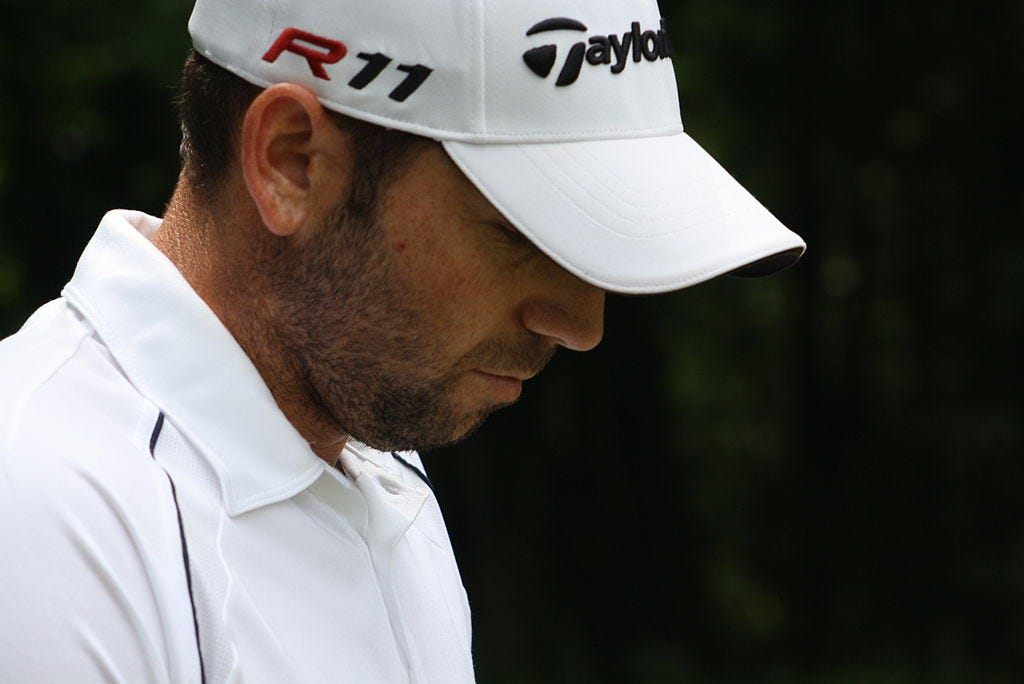Sergio Garcia’s golden decline
Once golden boy, Masters champion and Europe's talisman, he's now one of the public enemies of golf, but Sergio Garcia has seen his earnings rocket as his place at the top of the game has diminished.

Next week, when the world’s best golfers roll into Pittsford, New York for the 2023 PGA Championship at Oak Hill Country Club, there will be at least one player whose absence might be worth noting.
For this Major, Sergio Garcia will not be in the field.
Now, you might say (and it might be justified): “Why is that important? Garcia’s been on the downgrade for a years! He took the LIV money last year! He doesn’t deserve his place in the field.”
All of which are facts or convincing arguments.
But it is notable that Sergio Garcia will not be at Oak Hill, for one compelling reason.
Sergio Garcia is a Major hound.
Unless there are exceptional circumstances, Sergio just does not miss Major tournaments.
Oak Hill will be just the second Major Garcia has missed since he arrived like a firecracker as a 19-year-old in 1999, the brash young European pretender to the Tiger Woods show that was starting to sell out theaters countrywide.
In those 24 years, the only other time Garcia has missed a Major came in the 2020 November Masters, when he was forced to withdraw after a positive Covid test.
That means he has played 93 of the last 94 Majors, stretching back to The Open Championship of ‘99, where he missed the cut a few weeks before his arrival on the scene with a second place finish to Woods at the PGA Championship at Medinah, that tournament coming a month after a debut pro success at the Irish Open.
The reason Garcia is missing Oak Hill is simple.
He is no longer eligible.
The qualifying criteria for the PGA Championship are fairly straightforward, and Garcia misses out on all counts:
Top 100 in the Official World Golf Rankings (he has dropped to 189th in the latest OWGR)
Top 15 in last year’s PGA Championship (he missed the cut at Southern Hills)
Winner of a Major in the last five years (his five-year exemption from winning the 2017 Masters has now expired)
But even as Garcia—and his fellow LIV “rebels” such as Dustin Johnson and Bryson DeChambeau—has dropped down the rankings, he has seen his earnings multiply to unprecedented levels, even without taking into account any signing-on fee he received to join LIV in the first place.
LIV’s phenomenal impact on player earnings
The final separation between Garcia and his fellow European Ryder Cup team stalwarts Ian Poulter and Lee Westwood and the European Tour came earlier this month, when the three players eventually resigned their places on the DP World (a.k.a. European) Tour.
That development was just confirmation of a split that had happened almost 12 months previously, when they teed it up for the first LIV Golf Invitational at the Centurion Club outside London.
There are no official public accounts of the signing fee Garcia received to be part of LIV, but a figure of $40 million has been mentioned. (For Phil Mickelson, DeChambeau and Brooks Koepka, the whispers were that their golden welcome was closer to or even in excess of the $100 million mark.)
There were some early suggestions that those fees were in effect an advance on earnings, but that is not now believed to be the case—at least in the case of the higher profile players like those mentioned above, and others who followed later, such as Cam Smith, Bubba Watson and Joaquin Niemann.
Leaving aside the signing-on fee, which could in any case be described as a “business deal” akin to appearance fees at any billionaire plaything, a deeper look at tournament earnings and OWGR charts over time shows how Garcia’s week-to-week and tournament average earnings have rocketed due to LIV at the same time as his slip down the rankings has picked up pace.
The upshot of it all is that while Garcia has tanked to the lowest OWGR spot since his breakthrough almost quarter of a century ago, his tournament earnings—and especially average earnings per tournament, which are approaching an incredible $800,000 in five tournaments in 2023 alone—have gone in absolutely the opposite direction.
All of which brings into new light one of the chief conundrums facing those who really run golf: the organizing committees of the four Majors.
Is it feasible to deny LIV Golf world ranking points over the longer term?
And if that starts to dilute the quality of the Majors—as arguably might be starting to happen at Oak Hill next week—will sponsors and supporters really be happy with that outcome?
Time, as it generally tends to do, will tell.







